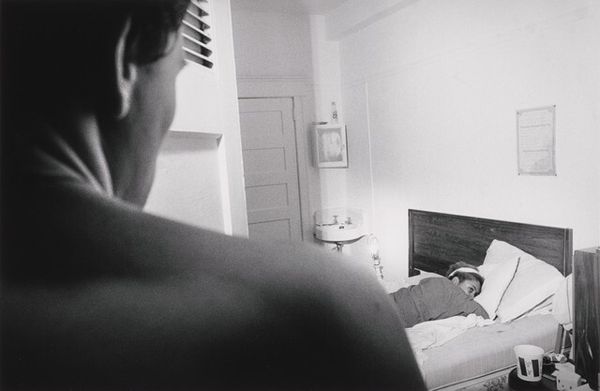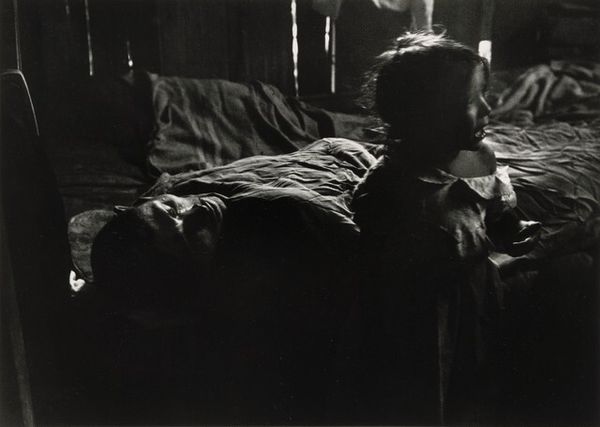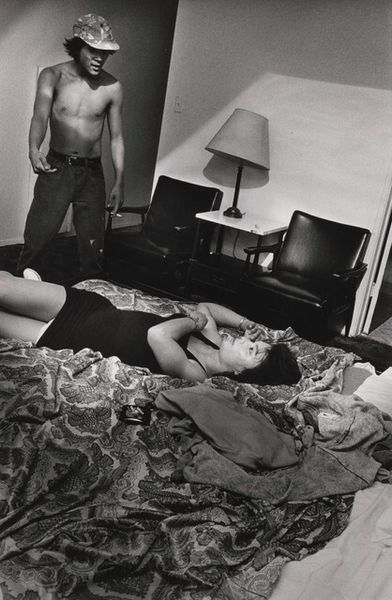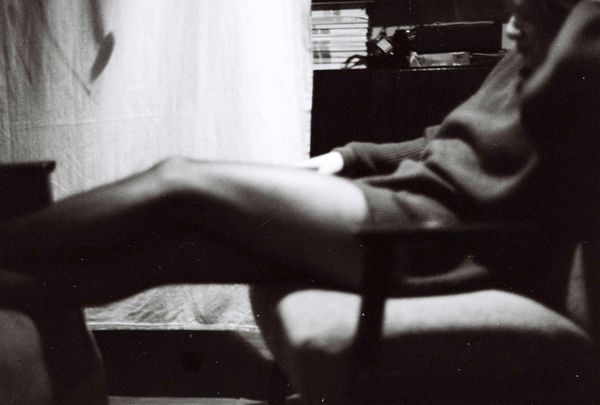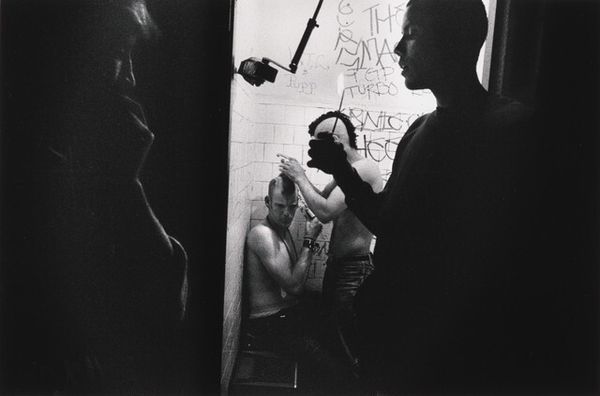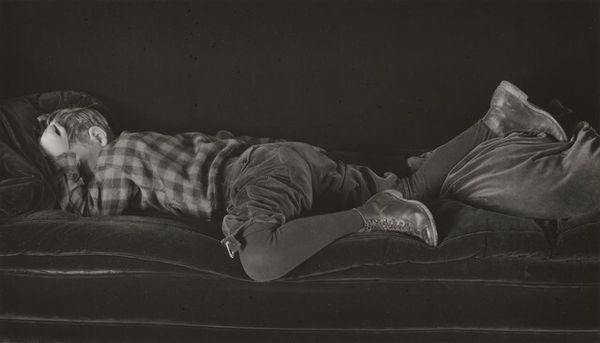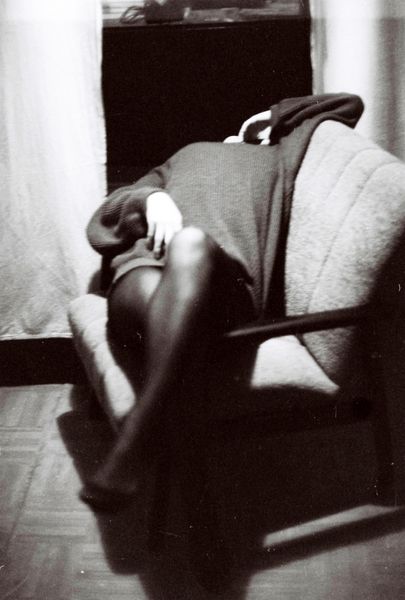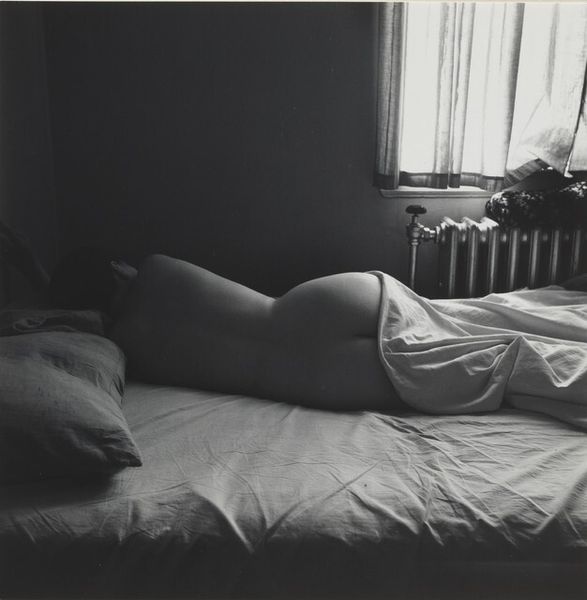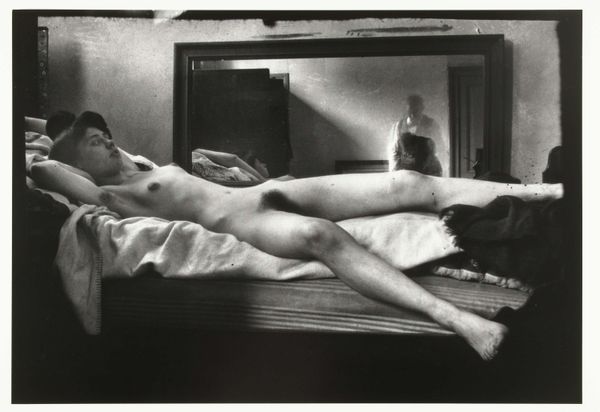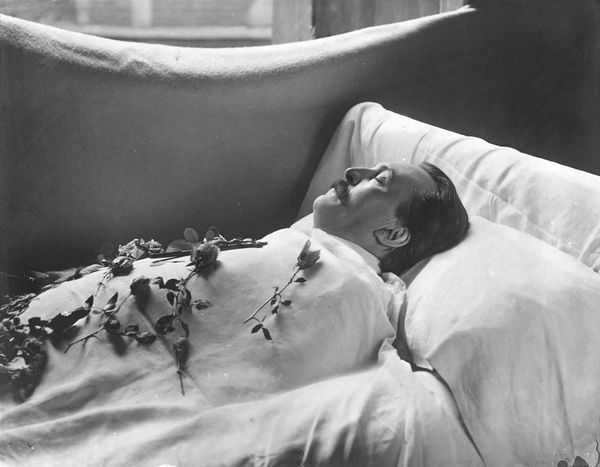
photography
#
black and white photography
#
street-photography
#
photography
#
intimism
#
black and white
#
monochrome
#
nude
#
monochrome
Dimensions: sheet: 27.6 × 35.4 cm (10 7/8 × 13 15/16 in.) image: 21.2 × 32.3 cm (8 3/8 × 12 11/16 in.)
Copyright: National Gallery of Art: CC0 1.0
Curator: Jim Goldberg’s black and white photograph, "Hollywood and Vine," tentatively dated between 1988 and 1994, immediately strikes me with its intimate, almost claustrophobic, feel. There's a strong contrast, a darkness that obscures as much as it reveals. Editor: Yes, the high contrast pulls you in. I am also compelled to analyze Goldberg's framing here; it is so centered around a young couple, intertwined with a cityscape lurking behind, isn't it? Curator: Indeed, let’s discuss Goldberg’s approach. Here we see a photo that hints at how his background making documentary work intersects with an artistic desire for visual expressiveness. Consider that tension as a generative way into the themes we're viewing: the human figure, intimacy and performance, urban life, gender, and so on. Editor: That’s insightful. Thinking about the era, late 80s and early 90s, this photograph could be seen as a quiet comment on societal attitudes towards intimacy. How it occurs inside, out of view, at least in relation to street view from the other side of the window. This could also imply broader conversations about vulnerability and marginalization as an act against public visibility and acceptance. The means by which this photo becomes a political act must be recognized. Curator: That contextual read brings such depth to understanding its value. Beyond its subjects, though, I'm drawn to the visible texture in the image—how it amplifies a feeling of raw reality in tension with romantic idealism. What labor goes into crafting this visual? It clearly took intentional choice to make these specific images, but where were those choices leading, and does this blur our perception of 'reality' versus 'art?' Editor: Certainly. The fact that Goldberg shoots using photography is critical; we read it as objective, documentary, true—even if the image presents its own staged qualities through shadow and visual imbalance. Considering also, from a gendered point of view, we can question who holds power in this intimate moment of exchange, and whether each party consents, even passively, to having it visualized as documentation, perhaps even as proof of experience. Curator: Right. And it seems clear that a certain set of skills and aesthetic choices led to the construction of such experience into an archive of seeing for the artist, and ultimately the audience. This consideration makes the artistic act even more impactful when seen today. Editor: Agreed, recognizing how such factors challenge how we interpret moments between subjects reminds me of how necessary that critical and careful vision is to make visible the often concealed political or cultural layers found in simple photos.
Comments
No comments
Be the first to comment and join the conversation on the ultimate creative platform.
